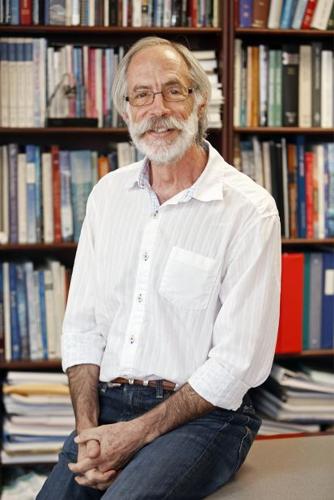These are extraordinary times for science.
We can now see personalized medicine on the horizon because of our new understanding of how biological systems work. Dramatic improvements in diagnostics, data management and communication will result from the technological innovations arising from new discoveries about the behavior of materials.
We are proud that the University of Arizona is at the center of some of the most extraordinary experiments and discoveries.
The Large Hadron Collider detected the Higgs boson, thanks in part to our faculty’s design and construction of the ATLAS detector. This past year we started the countdown for the launch of OSIRIS-REx, which will fleetingly land on a meteorite, collect a piece of it and bring that sample back to Earth.
We are also building the mirrors for the largest telescopes in the world, the Giant Magellan Telescope and the Large Synoptic Survey Telescope. They will continuously map the skies to understand dark matter and dark energy. All of these discoveries and efforts are in large part funded by grants from the federal government. These grants not only support innovation, they add to our local economy.
How can the University of Arizona continue to provide an environment that fosters discovery and application of new knowledge?
Increasingly, future innovations will also require partnership with industry and support from philanthropic organizations. Such partnerships are how the UA will continue to lead in science. For example, the program created by ExxonMobil and the UA department of geosciences has changed the way we understand how mountains are created. Another example is our partnerships with the Philecology Foundation and with the Thomas R. Brown Family Foundation, which are expanding our understanding of the mass balance of water in semi-arid environments and the CO2 budget of rain forests such as the Amazon.
The grand scientific challenges we are addressing are becoming even more challenging. Meeting those challenges in the future will demand even more partnerships between the UA and the federal government, industry and private foundations.
These are exciting times for science. UA’s leadership in scientific discovery will require innovation in how we support our science.





